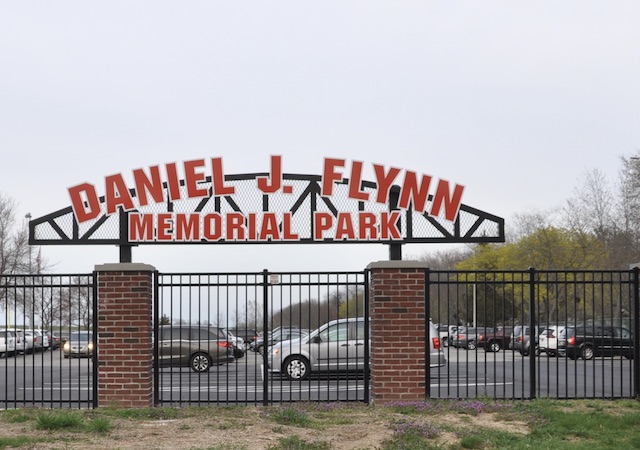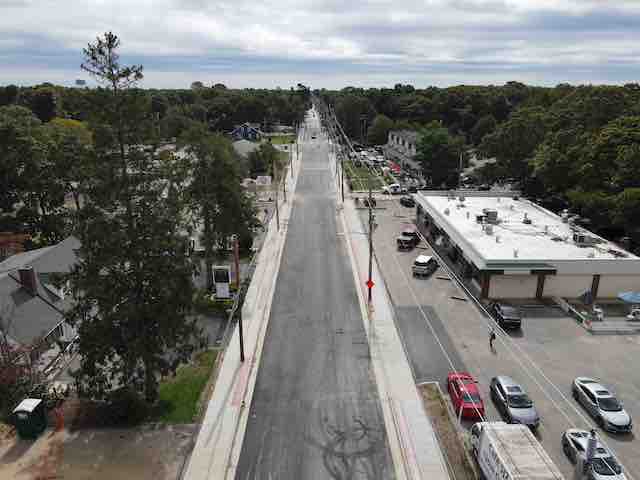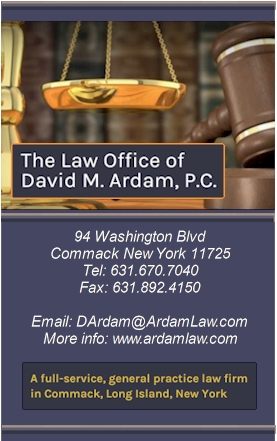News Of Long Ago - "Evelyn Nesbit Makes The Two Worst Mistakes Of Her Life..."
 Thursday, December 5, 2013 at 11:55PM
Thursday, December 5, 2013 at 11:55PM News of Long Ago by Bradley Harris, Smithtown Historian
(I have been writing about the story of the descendants of Judge J. Lawrence Smith and of the story of his daughter Bessie who married Stanford White. Last week’s article was about the murder of Stanford White and the events that led up to that fateful night of June 25, 1906. This article tries to answer the question of why Harry Thaw murdered Stanford White in cold blood five years after White seduced Evelyn Nesbit in the fall of 1901.)
“Evelyn Nesbit makes the two worst mistakes of her life….”
One of the most bizarre events in the saga of Evelyn Nesbit’s life took place on April 5, 1905 when Evelyn married Harry Thaw, the Pittsburgh, Pennsylvania millionaire whom she heartily disliked. Evelyn had first met Harry Thaw while having tea at Reckler’s in January of 1902 when he attempted to impress Evelyn with his money and devotion by sending her flowers, notes, and cash. When she met him, Evelyn would later recall, “he appeared to be in his thirties” and “he was tall, with coarse black hair combed almost straight back, and he was clean shaven. He had a short, wide nose, and Evelyn thought his eyes had a wild look – ‘he glared’ – she said. There was something about him that was frightening.” She didn’t want anything more to do with him, and yet three years later she became his wife. (Michael Macdonald Mooney, Evelyn Nesbit and Stanford White , William Morrow and Company, Inc., New York, 1976, pp. 78-79.)
Harry Thaw managed to weasel his way into Evelyn Nesbit’s life following the seven months she spent in seclusion at the “DeMille School” in Ramapo Hills, New Jersey. Stanford White had arranged for Evelyn’s enrollment in the exclusive school for 15 girls in October of 1902 when he discovered that Evelyn might be pregnant. She remained at the school – out of sight and out of mind – until she had an operation for appendicitis seven months later. The doctors who attended her, at Stanford White’s request, all agreed that Evelyn experienced an attack of ‘acute appendicitis’ and none of them recalled the birth of a child. It took a long time for Evelyn to recover from the operation and Stanford White had Evelyn moved to a private sanatorium in New York City. Throughout her ordeal, as she was recovering in the hospital and at the sanatorium, Harry Thaw who had won his way into Mrs. Nesbit’s good graces by insisting that he was “madly in love” with Evelyn, visited her faithfully. He was always kind and solicitous, and saw to it that her every wish was granted. When she was well enough to leave the sanatorium, Harry suggested that she take a trip to Paris to recuperate fully, and when she had regained her strength, he would take her on a grand tour of Europe. Harry would pay for everything. (Michael Macdonald Mooney, op. cit., pp. 93-94.)
Evelyn convinced her mother to accompany her on the trip and so in May of 1903 the two women sailed for London aboard the “S.S. New York.” Harry followed on another liner but arrived in London in time to secure hotel accommodations. After spending several weeks in London, Evelyn and Harry, with Mrs. Nesbit in tow, went on to Paris where Harry booked them into an apartment on the Avenue Matignon. In Paris, Evelyn and her mother enjoyed touring and seeing the many attractions that Paris had to offer. They went shopping in the finest stores in Paris, buying whatever they wanted and Harry picked up the bills. They visited the Louvre, and took drives through the Bois de Boulogne, and ate at the best restaurants, eating the finest cuisine, and Harry paid the tab. When they tired of Paris, they went back to London to enjoy the sights and attractions that London had to offer. In London, Evelyn and her mother argued over continuing the trip with Harry and Mrs. Nesbit decided to stay in London. Harry assured Mrs. Nesbit that when he and Evelyn got back to Paris, he would find a chaperone to accompany them on the rest of their trip. Of course that never happened, and when Evelyn and Harry returned to Paris, Harry arranged for them to stay in adjoining suites at the Ritz Hotel. (Paula Uruburu, American Eve, Riverhead Books, New York, 2008, p. 207-211.)
It was while they were staying in the Ritz that Evelyn “made the worst mistake of her life.” Harry had been badgering Evelyn to marry him, and she had turned him down. In Paris, away from “the unreasonable Mamma,” Harry pressed his suit. One evening, Harry simply stated “I want you to marry me!” And when Evelyn refused to answer him immediately, he insisted that he “must know the truth.” To which Evelyn replied, “I cannot marry you.” “Why not?” Harry wanted to know. “Do you not love me?” he asked. “Evelyn hemmed and hawed and hemmed, then began slowly and deliberately, saying, ‘Because.’” This of course sent Harry into orbit and he “ran his hands violently through his hair” and waited. “After months and months of Harry’s hounding and challenging her to explain her stonewalling,” Evelyn gave in and she proceeded to tell Harry “everything” about Stanford White. (Paula Uruburu, American Eve, op. cit., pp. 213-217.)
“Once she started, she found she could not stop: ‘I told him all that had happened since the very beginning.’“ And “the tale of her ruination” took her most of the night to tell since she told it “slowly and with great deliberation, unintentionally fanning Harry’s already smoldering torment. It was a difficult story to tell, not only because she remained with White after his disgraceful seduction of her, but she feared what Harry’s reaction would be after she confirmed his worst fears.” And Harry’s reaction proved to be truly meteoric. He “sobbed hysterically,” he “began to paw at his cheeks,” he “walked up and down the room, gesticulating as he muttered,” he began “to wring his hands,” gnash his teeth, and pull his hair. He berated “Evelyn’s mother of horrifying negligence and sinful abuse” and damned Stanford White for being a vicious sexual predator. Throughout this tirade, Evelyn held he breath, “waiting instinctively for the sword of Damocles to come down on her pretty neck in retribution for her own shameful behavior in her affair with Stanny.” But that retribution did not happen that night. (Paula Uruburu, American Eve, op. cit., pp. 217-221.)
Mrs. Nesbit, “stranded” in London for “almost a week,” decided to take “matters into her own hands” and “she cabled Stanford White for money to come home.” He wired her the funds to return to New York and “so Mama Nesbit left her teenage daughter” in Europe “in the hands of a man she knew could easily come unhinged and was prone to violence.” Evelyn, now completely dependent upon Harry Thaw, “decided to make the best of the situation” and she continued on Harry’s frenetic and expensive tour of Europe. They went to “the birthplace of Joan of Arc” at Domremy, France, then to Holland, “up the Rhine to Munich,” then on to Innsbruck, Austria, and then “to a bona fide castle in Tyrol.” (Paula Uruburu, American Eve, op. cit., pp. 219-221.)
“Wherever they travelled, Harry maintained separate rooms, in accordance with proper custom and a show of respectful decency.” He did this until he rented a castle, the Schloss-Katzenstein, in the Tyrolean Alps for three weeks. There they each had separate rooms in the huge Gothic castle of cold stones and dimly lit passageways. They had been there several days, when after a day spent in strenuous sightseeing, they returned to the castle. Harry dismissed the serving staff for the night and the young couple had the castle to themselves. After eating a dinner that had been prepared for them, Evelyn said that she was retiring for the night and went off to the room that had been prepared for her. Exhausted, she climbed into bed, tucked her head under her pillow, and fell asleep almost immediately. (Paula Uruburu, American Eve, op. cit., p. 222.)
Evelyn was awakened fifteen minutes later, when a “bug-eyed, seething, and startlingly naked Harry,” exposed in the bluish white light cast into the room from her open door, came up to the bed, “threw the pillow and covers aside and woke Evelyn with an angry, slashing blow across her legs with a leather riding crop. A startled Evelyn sprang up with a scream, whereupon Harry tore furiously at her nightgown.” Then he ripped off her underclothes with one hand while he whipped her repeatedly with the riding crop. “Evelyn pleaded with Harry to stop, but the more she protested and tried to fend off his blows, the harder he came at her, railing about sinfulness and shameful indecency.” He kept on attacking her until suddenly he stopped, perhaps to catch his breath. Then he flipped Evelyn on her back, held her down with the riding whip across her shoulders and proceeded to rape her. (Paula Uruburu, American Eve, op. cit., p. 223.)
The entire assault was over in the span of seven minutes, and after shouting incoherently at her for several more minutes, “Harry turned and left the room as suddenly as he had entered, without saying another word.” He “locked the door behind him.” This was the man who professed to be madly in love with Evelyn and wanted her to marry him. He was mad alright. “The next day and for the next two weeks, Evelyn simply sat pale and still in her room, as if turned into a pillar of salt.” (Paula Uruburu, American Eve, op. cit., p. 224-225.)
“At the end of the third week, a desolate Evelyn was informed they were leaving the castle.” Harry then loaded Evelyn and her luggage into a car and they continued on his planned European tour. “Harry took her to Zurich, where she immediately asked to see a doctor.” Harry obliged and took her to see a doctor he obviously used in the past, and the doctor found that she was recovering satisfactorily from her appendicitis operation. He said nothing about the ugly bruises, cuts and welts that covered her legs and back. The tour went with stops in Zurich, Bern, Lucerne, and finally back to Paris. “A solemn and at times virtually catatonic Evelyn spoke very little” during the trip. “She was only half-aware of the magnificent scenery that passed before her eyes from a string of carriages, railroad cars, and rented autos.” She spent much of the time crying. (Paula Uruburu, American Eve, op. cit., p. 226.)
When Harry and Evelyn returned to Paris, they paid a call upon Elizabeth Marbury who had an estate in Versailles. By an incredible stroke of luck, Evelyn encountered several people she had met back in New York. When Evelyn “broke down and told them her mortifying story of Harry’s sadism,” they came to her rescue and took her with them on the ocean liner back to New York. Harry provided money for her ticket and accommodations. She had, at long last, escaped his clutches. (Paula Uruburu, American Eve, op. cit., p. 227.)
When Evelyn arrived back in New York on October 24, 1903, there was no one there to greet her and she disembarked and found a room at the Savoy which she paid for using money that Harry Thaw had given her. Evelyn didn’t know what to do and she realized that she needed to go back to work. “Within a week of her return, while riding down Fifth Avenue in a hansom cab,” Stanford White passed Evelyn.” Shortly after that “chance passing,” White called her and Evelyn “agreed to meet him at her hotel.” As soon as he entered her room, “Stanny grabbed her face and tried to kiss her.” Evelyn “rebuffed him.” Making him sit down, Evelyn asked him about her mother and whether she was ill since White had told her that he needed to talk to her about “a life and death situation.” It turned out that the situation he was concerned about was Harry Thaw. “‘Don’t you know he takes morphine?’ White asked her. ‘Why would you go around with a man who is not even a gentleman? You must have nothing more to do with him.’” Evelyn certainly didn’t need to be told that. Paula Uruburu, American Eve, op. cit., p. 231.)
“White told her in no uncertain terms that she needed to hide from Thaw and cut all ties” and she did that finding ways to elude Thaw and his hired detectives. White helped Evelyn find a way to return to the stage and set her up for auditions in “a new Shubert production, “The Girl from Dixie,” and “she was offered a minor but featured part” in the show. (Paula Uruburu, American Eve, op. cit., p. 231.)
“Little by little, Evelyn began to learn disturbing things about Harry that she had not known before” her experience with Harry had given her intimate knowledge of “his perverted propensities.” To protect her from further harassment by Thaw, Stanford White arranged for Evelyn “to swear to Thaw’s cruelty in an affidavit” that she made in the offices of a lawyer named Abe Hummel. Hummel also gathered up some of Harry’s love letters that he had written to Evelyn and these documents gave Stanford White all he needed to keep Harry Thaw away from Evelyn, and all he needed to keep Harry from revealing all that Evelyn had told him about White’s own rape of Evelyn. (Paula Uruburu, American Eve, op. cit., pp. 232-233.)
Harry Thaw continued to pursue Evelyn months after he returned from Europe. She managed to hide from him for a while, “but inevitably, with the help of his ubiquitous private detectives, Harry was able to discover her whereabouts and he asked over the phone to meet with her.” Incredibly she agreed to meet with him in her hotel room, but she refused to meet with him alone. When she met with him, Harry brought along a lawyer named Thorton Warren, who simply vouched for everything Harry said. Evelyn was understandably cool to Harry and wouldn’t let him touch her. She looked up at him. “’I don’t know what to say to you,’ she said, her voice breaking with distress. ‘I have heard such dreadful, dreadful things about you that I feel I can never speak to you again.’” She then proceeded to tell Harry “about going to Hummel’s office” and “the statements she had made about their time in Europe.” She went on to tell him the dreadful things she had heard about him “beating young girls, scalding them in tubs, and taking cocaine and morphine.” Harry listened attentively. Then he stood up “shaking his head” and said to her: “Poor little Evelyn.” He went on to say “that everything she heard was a lie.” Harry went on to question Hummel’s motives in getting Evelyn to make an affidavit and noted that “it was well known that any woman who wanted to initiate “’a blackmailing suit against some rich man always went to Hummel.’” (Paula Uruburu, American Eve, op.cit., p. 236-237.)
By the time Harry left, Evelyn was totally confused and she began to question everything she had been told about Harry. In the weeks that followed his visit, Harry “used ‘every subterfuge’ to get back into Evelyn’s good graces.” He called to “check on her health,” he suggested she give up her acting career, and he agreed to pay any salary she was receiving if she did so. He was “so solicitous of her welfare” that it led “’seventeen-and-three-quarters-year-old’ Evelyn” to make “the second biggest mistake of her life. She began a tentative process of reconciliation with Harry, in spite of his atrocious sexual assault of her, his bouts of uncontrollable wrath, his awful battery, and all the reports she had heard about his most vicious proclivities.” (Paula Uruburu, American Eve, op. cit., pp. 238-239.)
Evelyn’s reconciliation with Harry led inevitably to her marriage to the playboy millionaire of the Pittsburgh Thaws, but that is more of the story that will have to wait until next week….










